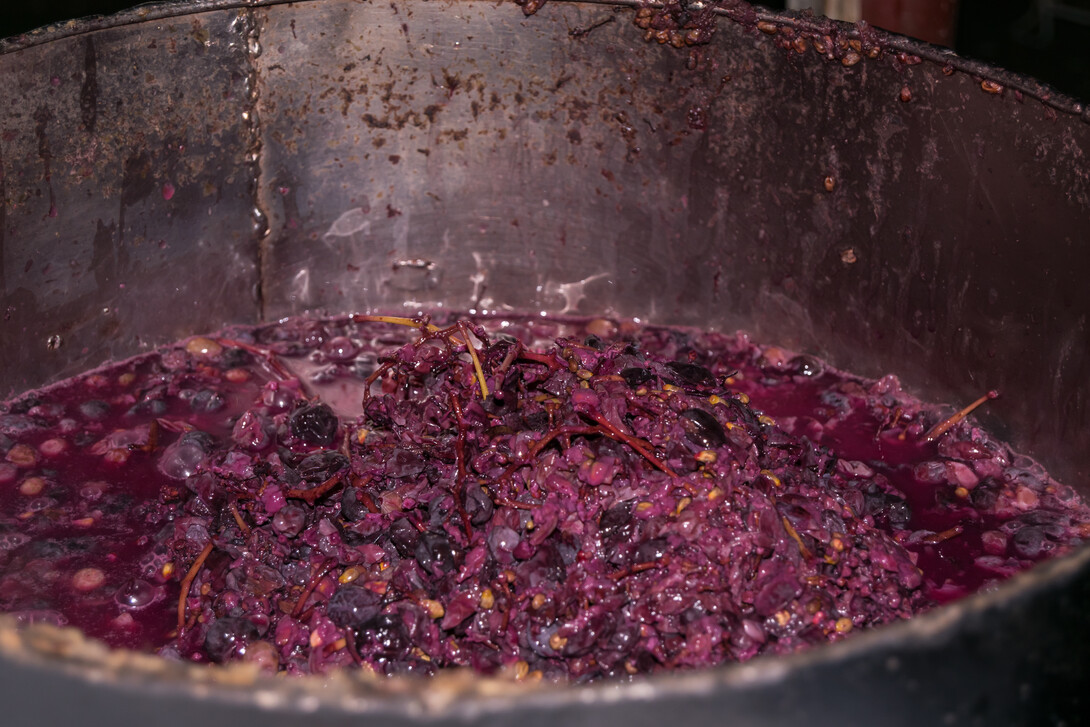
It’s no secret that grapes are the primary ingredient in wine, but what happens to the parts of the grape that don’t go into that bottle of Merlot?
Roughly 20 percent of the grape, including the seed, stalk and skin, are not used in wine production and therefore wind up in landfills. New research from the University of Nebraska–Lincoln is focused on creating beneficial uses for grape pomace, or the parts of the grape not used to make wine.
Nebraska’s Changmou Xu is leading a team working to identify and take specific nutrients from pomace and use them for a number of commercial products ranging from dietary supplements to cosmetics.
“If we can figure out how to turn grapes into a renewable resource, not only would it add value to the grape industry, but it would also minimize the environmental impact of grape production,” said Xu, research assistant professor in food science and technology.
According to the United Nations’ Food and Agriculture Organization, the global wine industry produces roughly 14 million tons of pomace each year. Not only does this present a challenge for wine makers trying to figure out what to do with the waste, but it can be harmful to the environment.
Environmental issues arise when chemicals used on the grapes enter the environment and lead to increased soil acidity and groundwater pollution. According to Xu, the waste can also lead to the spread of diseases by attracting pests at landfills.
While most pomace is discarded, some winemakers use the waste as a compost or fertilizer. Pomace can also be used to make a weaker “second wine” by soaking the grape skins in water and fermenting the mixture.
Xu believes the true potential for pomace lies with its seed oil and polyphenols, or the natural antioxidants that don’t damage cells. These antioxidants can then be used to make natural food additives, pharmaceutical products or cosmetics.
The researchers are also hoping to use pomace extract to extend the length of time a food item can be stored before consumption. Their studies have involved swapping the natural antioxidants found in pomace with the artificial antioxidants found in fatty foods such as mayonnaise, which could extend the shelf life of the products. In two studies, Xu and his team used grape polyphenols to reduce acrylamide formation — a suspected carcinogen that forms in foods after high-temperature cooking — in potato chips by 60 percent. Using grape polyphenols as a natural antimicrobial agent also inhibited foodborne pathogen growth and their biofilm formation.
Not only would this ingredient swap extend the shelf life of certain foods, but it would appeal to those seeking natural ingredients in their food products, Xu said.
“More consumers than ever are reading labels and want to understand what’s in their food,” he said. “By using natural antioxidants, we’re responding to consumer demand.”
Xu and his colleagues recently presented their research at the 255th National Meeting and Exposition of the American Chemical Society, the world’s largest scientific society.
Others on the research team include Paul Read, professor of agronomy and horticulture, postdoctoral research associate Xiaoqing Xie and doctoral student Hefei Zhao.







